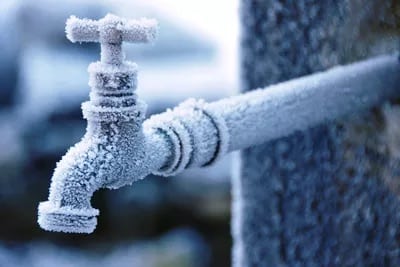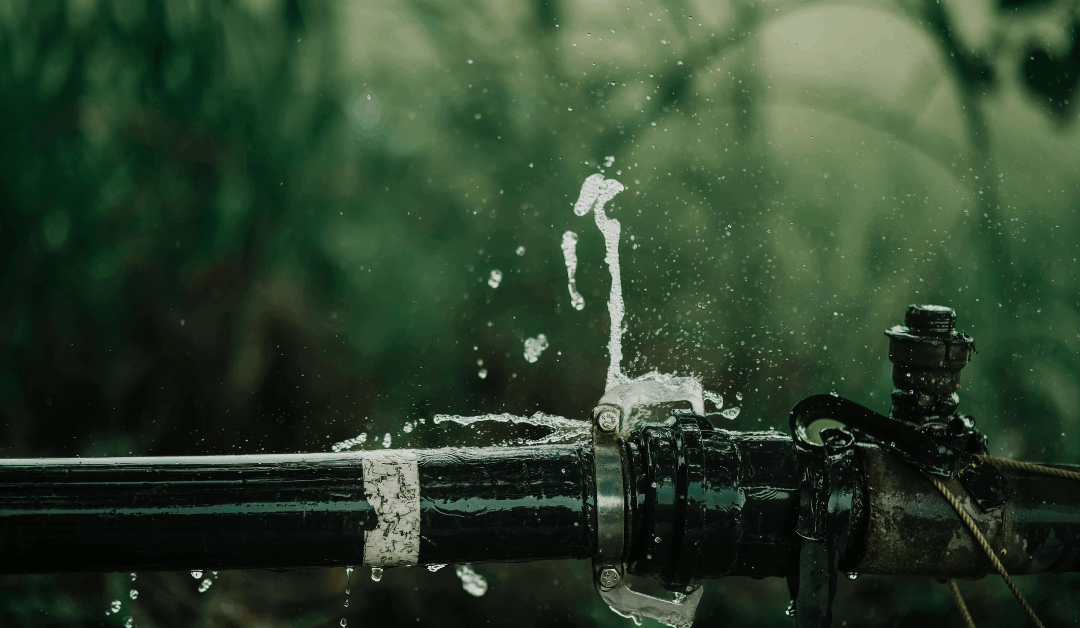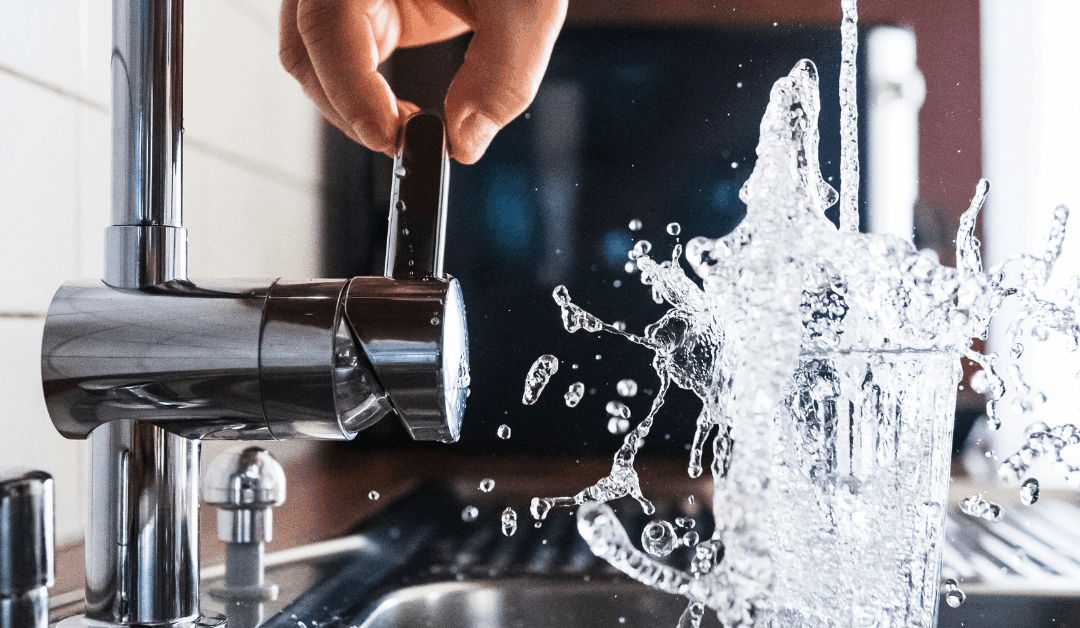Maryland winters can be unpredictable. One week brings mild temperatures that fool you into thinking spring is around the corner, and the next delivers a sudden freeze that catches homeowners off guard. At MD Sewer & Plumbing, we’ve witnessed countless emergencies that could have been prevented with proper winterization—frozen pipes that burst overnight, flooded basements, and costly repairs that devastate household budgets.
With over 35 years of experience serving Pasadena and surrounding communities, we’ve learned that the best plumbing repair is the one you never need. Winterization isn’t just a seasonal chore; it’s your home’s insurance policy against winter’s worst surprises.
The good news? Most winterization tasks are straightforward, and the investment in time and materials pays for itself many times over. Whether you tackle these preparations yourself or work with professional plumbing services, taking action before temperatures drop protects both your comfort and your wallet.
Schedule Service Online
Get a free estimate so you know what you're signing up for
"*" indicates required fields
For Emergency Services Call: 410-255-9300
What Is Winterization and Why Is It Critical for Maryland Homes in Cold Weather?
Winterization means preparing your entire plumbing system to handle freezing temperatures without sustaining damage. Think of it as creating a protective barrier around your pipes, fixtures, and water systems—similar to how you winterize your car or prepare your garden for cold weather.
The process involves four key elements: insulation, drainage, sealing, and inspection. Each component works together to prevent water from freezing inside your pipes, which causes expansion that can crack or burst even the strongest materials.
Maryland’s climate presents unique challenges that make winterization especially important. Our coastal humidity can make cold temperatures feel more penetrating, while many homes in the area were built decades ago with plumbing systems that weren’t designed for modern efficiency standards. Older homes often have pipes running through unheated spaces like basements, crawl spaces, and exterior walls—prime locations for freeze damage.
The economic impact of skipping winterization can be severe. A single burst pipe can cause thousands of dollars in water damage, not to mention the inconvenience of emergency repairs during the coldest months of the year. Insurance claims for freeze-related damage spike every winter, and many policies don’t cover damage that results from poor maintenance.

Essential Winterization Steps For Cold Climates: Protect Every Part of Your Plumbing System
Inspect and Insulate Your Pipes
Start your winterization process with a thorough inspection of your plumbing system. Walk through your basement, garage, crawl space, and any other unheated areas where pipes are exposed. Look for signs of existing problems: small leaks, corrosion, or pipes that already show stress from previous freeze cycles.
Pay special attention to pipes along exterior walls, as these are most vulnerable to cold air infiltration. Even pipes inside heated spaces can freeze if they’re located near drafty windows or doors.
Pipe insulation comes in several forms, but foam sleeves are the most common and effective for most homeowners. These pre-slit tubes slip over pipes and provide excellent protection against temperature drops. For pipes in extremely vulnerable locations, consider heat tape—an electrical heating element that wraps around pipes and plugs into standard outlets.
Don’t overlook the small details during your inspection. Check pipe joints, connections, and valves for any signs of wear. These areas are particularly susceptible to freeze damage because they often have slightly different expansion rates than straight pipe runs.
If you discover leaky pipes or notice any concerning wear patterns, address these plumbing repairs before cold weather arrives. Our qualified plumbers can perform comprehensive inspections and handle any necessary repairs to ensure your system is ready for winter’s challenges.
Drain Outdoor Faucets and Disconnect Hoses
Outdoor plumbing fixtures face the harshest conditions and require special attention during winterization. Garden hoses left connected to exterior faucets create a continuous water pathway that extends your home’s plumbing system into unprotected outdoor areas.
Begin by disconnecting all hoses and draining them completely. Store hoses in a garage or basement where they won’t be exposed to freezing temperatures. Even a small amount of water left in a hose can freeze and expand, damaging both the hose and the faucet connection.
Next, locate the shutoff valves for your exterior water lines. These are typically found in your basement or utility room, and they control water flow to outdoor spigots. Turn off these valves and then open the outdoor faucets to drain any remaining water from the lines.
Many homes have frost-free outdoor faucets designed to prevent freezing, but these systems only work properly when hoses are disconnected and the faucets are allowed to drain completely. Leaving a hose attached defeats the frost-free design and can lead to frozen pipes inside your walls.
A frozen outdoor faucet might seem like a minor inconvenience, but the damage often extends inside your home’s walls. When pipes freeze and burst behind exterior surfaces, the resulting water damage can affect insulation, drywall, and even structural elements. Our faucet repair services frequently address freeze damage that could have been prevented with proper winterization.
Test and Maintain Your Sump Pump
Your sump pump works harder during winter months than many homeowners realize. While summer brings obvious challenges like heavy rains, winter creates its own set of demands through freeze-thaw cycles, snow melt, and ice dams that can overwhelm drainage systems.
Testing your sump pump is straightforward: pour several gallons of water into the sump pit until the pump activates. The pump should turn on automatically when water reaches the trigger level, run smoothly without unusual noises, and effectively remove water from the pit.
If your pump doesn’t activate, makes grinding or rattling sounds, or fails to move water efficiently, schedule sump pump repair before winter weather arrives. Sump pump failures during cold months often lead to basement flooding, which can cause extensive damage to stored items, flooring, and home systems.
Consider installing a backup power source for your sump pump, especially if your area experiences winter storms that commonly cause power outages. Battery backup systems or generators ensure your pump continues operating even when electricity is unavailable.
Regular maintenance extends your sump pump’s life and reliability. Clean debris from the pit, check the discharge line for blockages, and ensure the pump’s float mechanism moves freely. These simple steps prevent many common failures that lead to emergency repairs during the worst possible weather conditions.
Service Your Water Heater
Cold weather places enormous stress on water heater systems. As ambient temperatures drop, your water heater must work significantly harder to maintain hot water temperature, exposing any existing inefficiencies or mechanical problems.
Sediment buildup is one of the most common issues affecting water heater performance during winter. Minerals in your water supply gradually settle at the bottom of the tank, creating an insulating layer that forces the heating element to work harder and longer. This not only reduces efficiency but can also lead to premature component failure.
Flushing your water heater removes accumulated sediment and improves both performance and longevity. The process involves connecting a hose to the drain valve and running water until it flows clear. While many homeowners can handle this maintenance task, professional plumbing services ensure the job is done safely and completely.
During your water heater service, check for signs of leaks around connections, corrosion on the tank exterior, and proper operation of safety features like temperature relief valves. These components are critical for safe operation and can prevent dangerous situations if problems develop during high-demand winter months.
If your water heater is approaching the end of its expected lifespan—typically 8 to 12 years for conventional tank systems—consider replacement before winter rather than risking a breakdown during peak usage periods. Modern water heaters offer significantly better efficiency and reliability than older units.
Seal Drafts From Cold Air and Protect Indoor Fixtures
Cold air infiltration affects more than just your comfort—it can cause pipes inside heated spaces to freeze. Even small gaps around pipe penetrations, windows near plumbing fixtures, or storm doors leading to unheated areas can allow enough cold air to threaten your plumbing system.
Walk through your home with particular attention to areas where plumbing fixtures meet exterior walls. Kitchen and bathroom sinks, washing machine connections, and water heater installations often have gaps that allow cold air to reach pipes and supply lines.
Foam insulation, weather stripping, and caulk are your primary tools for sealing these gaps. Pay special attention to areas where pipes enter your home from outside, as these penetrations often have larger gaps that provide pathways for cold air.
Don’t forget about indoor fixtures that might be affected by cold air. Pipes under sinks along exterior walls can freeze even when the rest of your home is comfortably heated. Consider opening cabinet doors during extremely cold weather to allow warm air to circulate around these vulnerable pipes.
Bathroom fixtures require special attention because they often combine plumbing with exterior wall locations. Ensure that insulation behind bathtubs and showers is adequate, and consider adding extra protection if these areas have experienced problems in previous winters.
Understanding Winterization Costs: Investment vs. Emergency Repairs
The cost to winterize your home depends on several factors: your home’s size and age, the current condition of your plumbing system, and whether you handle tasks yourself or hire professional plumbing services. For most Maryland homeowners, comprehensive winterization typically ranges from $150 to $500.
This investment covers pipe insulation materials, professional inspections, water heater maintenance, and any minor repairs discovered during the winterization process. While the upfront cost might seem significant, compare it to the expense of emergency plumbing repairs during winter months.
A single burst pipe can easily cost $1,000 or more to repair, not including water damage to flooring, walls, furniture, and personal belongings. Insurance claims for freeze-related damage often involve multiple thousands of dollars, and the inconvenience of living without water or dealing with extensive repairs can be overwhelming.
At MD Sewer & Plumbing, we provide upfront pricing for all winterization services, so you know exactly what to expect before work begins. Our free estimates help homeowners understand their specific needs and budget for appropriate protection.
The most affordable winterization approach combines DIY tasks with professional services for complex systems. Homeowners can handle pipe insulation, hose disconnection, and basic sealing, while leaving water heater service, comprehensive inspections, and any necessary repairs to experienced technicians.
Consider winterization as an investment that pays dividends in multiple ways: lower energy costs from improved efficiency, reduced risk of expensive emergency repairs, and peace of mind knowing your home is protected against winter’s worst conditions.
When Professional Help Makes the Difference
While many winterization tasks are within reach for handy homeowners, certain situations require professional plumbing services to ensure comprehensive protection and safety. Recognizing when to call experts can save time, money, and prevent dangerous mistakes.
Contact professional plumbers if you notice any of these warning signs during your winterization preparations: clogged drains that don’t clear with standard methods, consistently low water pressure throughout your home, banging or rattling sounds from pipes when water runs, visible leaks or water damage around fixtures, or unusual smells that might indicate sewer line problems.
Advanced diagnostic tools allow professional technicians to identify problems that aren’t visible during basic inspections. Camera inspections can reveal blockages or damage inside sewer lines, while pressure testing can locate leaks in supply lines before they become major problems.
Older homes often present challenges that require professional expertise. Outdated plumbing systems, unusual pipe routing, and integration with heating systems can complicate winterization efforts. Our highly rated plumbers understand these complexities and can recommend solutions that protect your investment without requiring expensive system upgrades.
Emergency situations don’t follow convenient schedules, which is why MD Sewer & Plumbing offers 24/7 emergency services throughout winter months. Whether you discover a water leakage during weekend winterization efforts or experience a freeze-related failure during a holiday cold snap, our technicians are ready to respond quickly and effectively.
Professional maintenance contracts can simplify winterization by ensuring your plumbing system receives appropriate attention each year. These programs typically include comprehensive inspections, preventive maintenance, and priority scheduling for any necessary repairs.

Why Maryland Families Choose MD Sewer & Plumbing
Family-owned businesses understand the importance of protecting your home because we face the same challenges in our own properties. For over 35 years, MD Sewer & Plumbing has served Maryland homeowners with the knowledge that every service call represents someone’s biggest investment—their home.
Our approach combines fast response times with honest, upfront pricing because we know plumbing emergencies cause enough stress without worrying about hidden fees or surprise charges. When you call our office, you’re speaking with neighbors who understand local conditions and common challenges specific to Maryland homes.
Our skilled service professionals use the latest diagnostic equipment and repair techniques, but we never lose sight of the human element in every job. Whether addressing a complex sewer line repair or helping a homeowner understand basic winterization steps, we treat every interaction as an opportunity to build long-term relationships based on trust and quality work.
The difference shows in our customer reviews and repeat business. Families who work with us for routine maintenance often call us first when friends or neighbors need plumbing services. This word-of-mouth reputation reflects our commitment to treating every home as if it belongs to our own family members.
Our comprehensive service range means you can rely on one trusted team for everything from basic winterization through complex emergency repairs. This continuity ensures consistent quality and allows our technicians to understand your home’s specific systems and history.

Protect Your Investment From Cold Temperatures Before It’s Too Late
Winterization represents one of the most cost-effective investments you can make in your home’s long-term health and your family’s comfort. The relatively small expense of proper preparation prevents major disruptions and expensive repairs that can derail household budgets and create lasting damage.
Maryland’s unpredictable winter weather makes preparation even more critical. While we can’t control when temperatures will drop or how severe cold snaps might be, we can ensure our homes are ready to handle whatever winter brings.
The best time for winterization is before you need it—ideally during fall months when weather is still cooperative and materials are readily available. Waiting until freezing weather arrives limits your options and increases the likelihood of emergency situations.
Don’t wait for freezing temperatures to threaten your home’s plumbing system. Call MD Sewer & Plumbing today at [phone number] to schedule your comprehensive winterization service, or visit our website to request your free estimate online. Our experienced technicians will ensure your pipes, fixtures, and water systems are ready to handle Maryland’s coldest weather, giving you peace of mind throughout the winter months.
Remember: the most expensive plumbing repair is the one that could have been prevented. Protect your pipes before the freeze—your family and your wallet will thank you.
Frequently Asked Questions About Winterization
How early should I start winterizing my home?
Begin winterization preparations in early fall, ideally by October in Maryland. This timing allows you to address any discovered problems before cold weather arrives and ensures materials and professional services are readily available.
Can I winterize my home myself, or do I need professional help?
Many winterization tasks are suitable for DIY completion, including pipe insulation, hose disconnection, and basic sealing. However, water heater service, sump pump repairs, and comprehensive system inspections benefit from professional expertise.
What’s the most important winterization step I shouldn’t skip?
Pipe insulation in unheated spaces provides the most critical protection against freeze damage. This single step prevents the majority of winter plumbing emergencies and costs relatively little compared to potential repair expenses.
How do I know if my winterization efforts were successful?
Successful winterization means no frozen pipes, consistent water pressure, and normal operation of all fixtures throughout winter months. If you experience any plumbing problems during cold weather, contact professional services immediately.
Do I need to winterize every year?
Yes, annual winterization is recommended because materials can deteriorate, seals can fail, and systems can develop new vulnerabilities. Annual maintenance also provides opportunities to address small problems before they become major issues.
Your Guide to Winterization Resources
Preparing your home for winter involves a few key areas, from your HVAC system to your plumbing and overall energy efficiency. To help you get started, we’ve compiled a list of reliable resources from trusted organizations. Use these guides and tools to protect your home, save energy, and find potential rebates this season.
- ENERGY STAR Home Winterization Guide
This guide from the EPA offers a comprehensive checklist for sealing air leaks and improving your home’s energy efficiency for winter. - U.S. Department of Energy – Fall & Winter Energy-Saving Tips
Find practical advice on everything from managing your thermostat to winterizing windows and using heating equipment efficiently. - American Red Cross – Frozen Pipe Prevention
Learn essential steps to prevent your pipes from freezing and what to do if you suspect a frozen pipe to avoid costly water damage. - DSIRE – Database of State Incentives for Renewables & Efficiency
This nationwide database helps you search for energy-related rebates, tax credits, and savings programs available in your specific state and zip code. - Centers for Disease Control and Prevention – Winter Weather Safety provides critical information on staying safe during winter storms, including tips on preventing carbon monoxide poisoning from heating sources.
- ENERGY STAR Rebate Finder
Use this tool to discover rebates on ENERGY STAR certified products, including high-efficiency furnaces, boilers, and heat pumps in your area. - U.S. Department of Energy – Heat Pump Systems
Explore how modern heat pumps work and understand the benefits they offer for efficient heating and cooling throughout the year.



